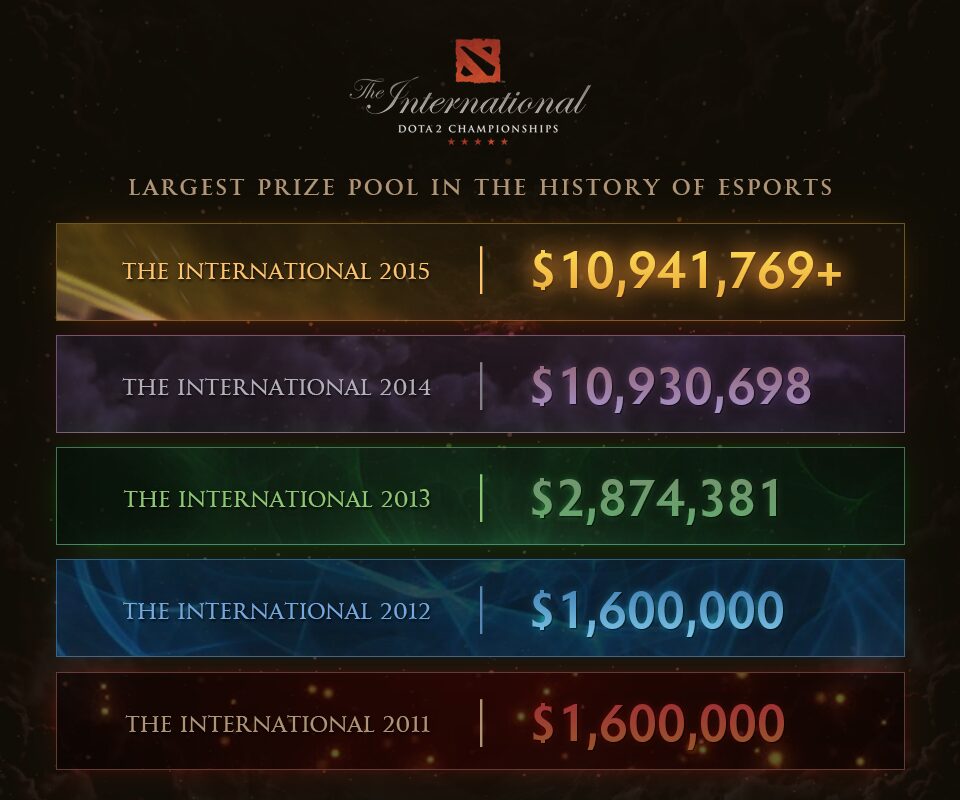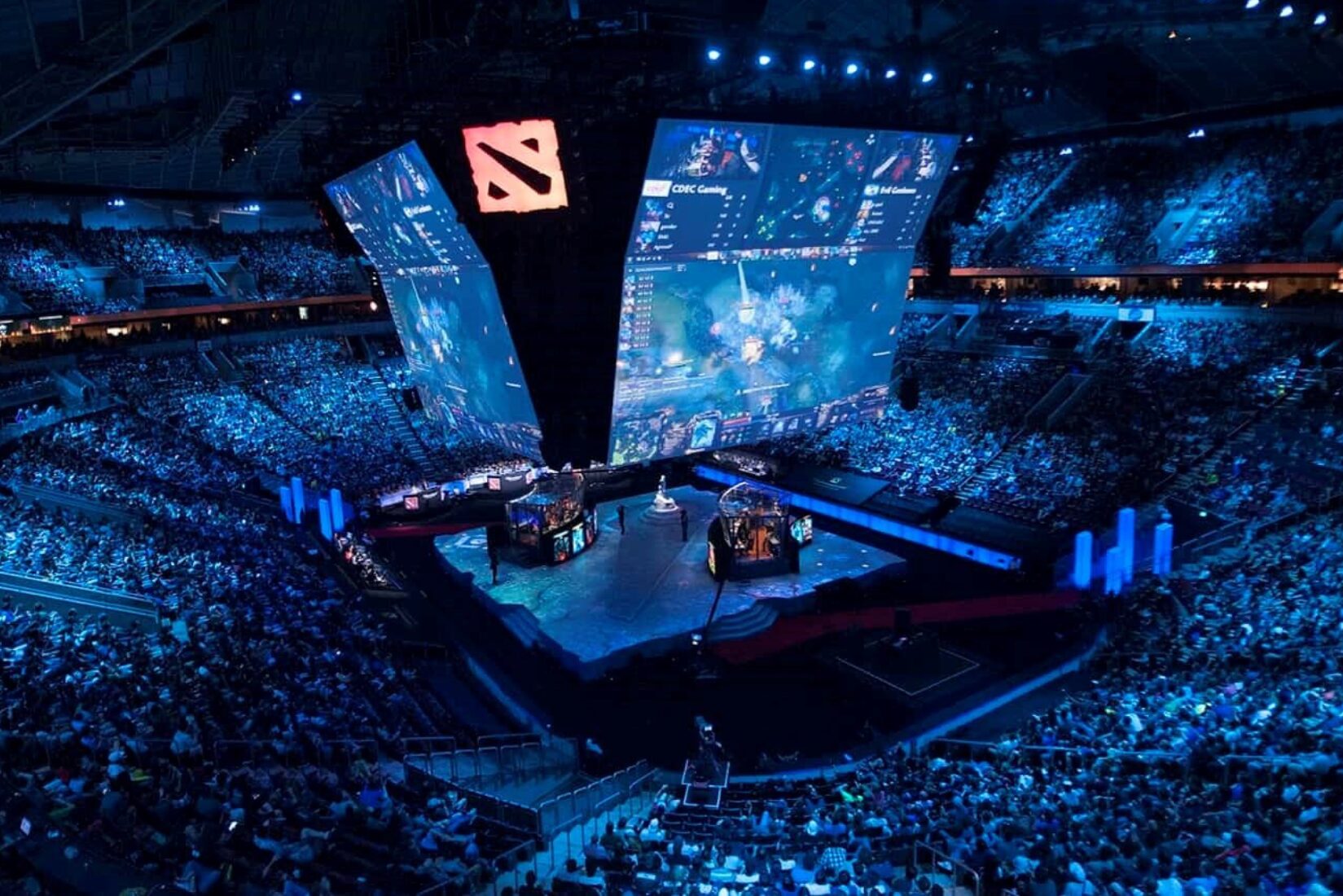Dota2 prize pool history: When people talk about esports history, The International almost always comes up — not just because of its competitive scale but because of what it represents to fans around the world. The story of the Dota 2 prize pool is less about numbers and more about the spirit of a community that made those numbers possible. From the early years when Valve fronted the entire amount to the record-breaking Battle Pass era, and now into a phase of recalibration, the prize pools have mirrored the lifestyle of Dota players and fans everywhere. Whether at local cafés in Manila, packed arenas in Shanghai, or small living-room watch parties in Europe, these prize pools became a talking point, a tradition, and in many ways a cultural bond.
Quick Look
The Foundation Years

Source: Gadget360
The International began in 2011 with $1.6 million, a fully Valve-funded pool that stunned both the gaming and sporting world. Na’Vi’s victory in Cologne became more than just a result on a stage — it was a rallying point for fans who suddenly saw Dota 2 in the global spotlight. The following year, Invictus Gaming claimed their championship, and while the prize pool remained unchanged, the emotional stakes had grown exponentially. These early tournaments created rituals: fans staying up overnight to catch live streams, team chants echoing online forums, and a budding belief that this event was different from anything esports had seen before.
Community Power

When Valve introduced the Compendium in 2013, the community’s role in shaping the prize pool became undeniable. Suddenly, every fan purchase meant something more — it was an investment not just in cosmetics but in the shared excitement of watching the total climb higher each day. The culture around The International changed. It became normal to watch the “prize pool ticker” as closely as the matches themselves, turning growth into a spectator sport in its own right.
The era that followed produced unforgettable moments:
- The breakthrough $10.9M at TI4, where Newbee triumphed.
- The dramatic $18M TI5, which crowned Evil Geniuses.
- The historic $40M TI10, with Team Spirit’s underdog victory.
Fans weren’t just cheering for teams — they were celebrating their own collective impact. For many, it felt like each purchase of a Battle Pass or cosmetic item was a vote of confidence in Dota 2’s future, proof that community and developer could fuel something bigger together.
A Shift in Atmosphere

When the Battle Pass era ended, the conversation around The International began to change. TI11 in 2022 still carried nearly $19M, but it was the first sign that the enormous growth wasn’t guaranteed forever. By TI12 in 2023, the pool had dropped to just over $3M, and in 2024, it slipped further to $2.6M — figures not seen in a decade. While some mourned the end of record-breaking totals, others found a renewed focus on prestige.
The community responded in two ways. On one side, there was nostalgia for the excitement of watching prize numbers surge, the thrill of cosmetic rewards, and the sense of momentum that crowdfunding once brought. On the other, many saw this as a healthy reminder that TI’s true magic lies in its competition and culture. Fans in Southeast Asia still organized mass viewing events, memes still circulated on social platforms, and teams still fought as if the stakes were higher than any number could show.
TI14 and the Present Landscape – Dota2 prize pool history

Hamburg’s hosting of TI14 in 2025 has been framed as both a reset and a return to basics. With the base $1.6M guaranteed by Valve, projections suggest a modest $2.5M–$3M final pool. But for many, this smaller figure carries a symbolic weight. It brings the event closer to its origins, when passion and prestige mattered more than raw totals.
Fans today rally around The International as a cultural moment: esports bars in Berlin screening matches, watch parties in Manila, and family gatherings in Shanghai where multiple generations tune in together. The shared experience of TI continues to thrive, showing that even if the dollar signs fluctuate, the cultural resonance of the event endures.
What the Prize Pool History Really Means – Dota2 prize pool history

When we reflect on the Dota2 prize pool history, the true story is not the rise and fall of numbers but the ways in which those numbers brought people together. The $40M peak of 2021 was a triumph, but so too are the smaller pools that remind fans of TI’s roots. What matters is how communities have embraced the event — turning it into a yearly festival that celebrates not only Dota but the lifestyle of those who play, watch, and love the game.
At its heart, the prize pool is a mirror. It reflects community passion, Valve’s evolving strategies, and esports’ place in global culture. Whether future TIs return to massive pools or remain modest, the legend of The International will always be measured not only in dollars, but in memories and traditions built by its fans.
Conclusion – Dota2 prize pool history
The journey of the Dota2 prize pool history shows a cycle of ambition, community power, recalibration, and cultural endurance. From Cologne in 2011 to Hamburg in 2025, each stage of TI’s growth has been shaped by the people who cared enough to make it special. Money created headlines, but community created a legacy — and that legacy continues to define The International as one of esports’ most enduring and celebrated events.





